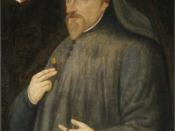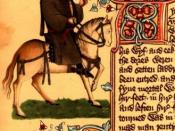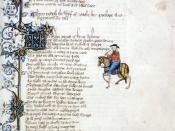Chaucer's The Canterbury Tales and European Life The Canterbury Tales is a collection of short stories put together in the late 1380's and early 1390's by Geoffrey Chaucer. The book is based in stories told by a group of thirty English pilgrims making a pilgrimage from Southwark, London to the shrine of St. Thomas Becket at Canterbury. In choosing a pilgrimage, "Chaucer came very close to the very core of the life of his times"ÃÂ (Canterbury Tales, xv). During the fourteenth century, England was completely Catholic and religion was a very important issue. Pilgrimages were strongly recommended by the church, one to Canterbury being the best because Becket was murdered there. He was the archbishop of Canterbury and most powerful religious figure in England. The pilgrimages were also known as social events. Chaucer uses the pilgrimage as both an unquestionable devotion and a pleasurable vacation to bring together many of his characters, such as the Prioress and the Parson, with the Miller and the Friar.
The travelers stop at the Tabard Inn on their way to Canterbury and decide to tell stories to pass the time. The Host sets rules for the tales and each of the pilgrims is to tell two stories on the way to Canterbury, and two on the way home. Chaucer does a very good job of selecting characters that represent types of fourteenth-century society, as with the Merchant, Monk, Knight, and Friar. Using his characters, Chaucer addresses issues such as the supernatural and the many people of his time claiming to be able to absolve people's sin if paid. Chaucer writes to a medieval audience fond of moralizing stories and romances. Chaucer had contact with the world and based his characters on real people of his society. By using the everyday language of the streets,


